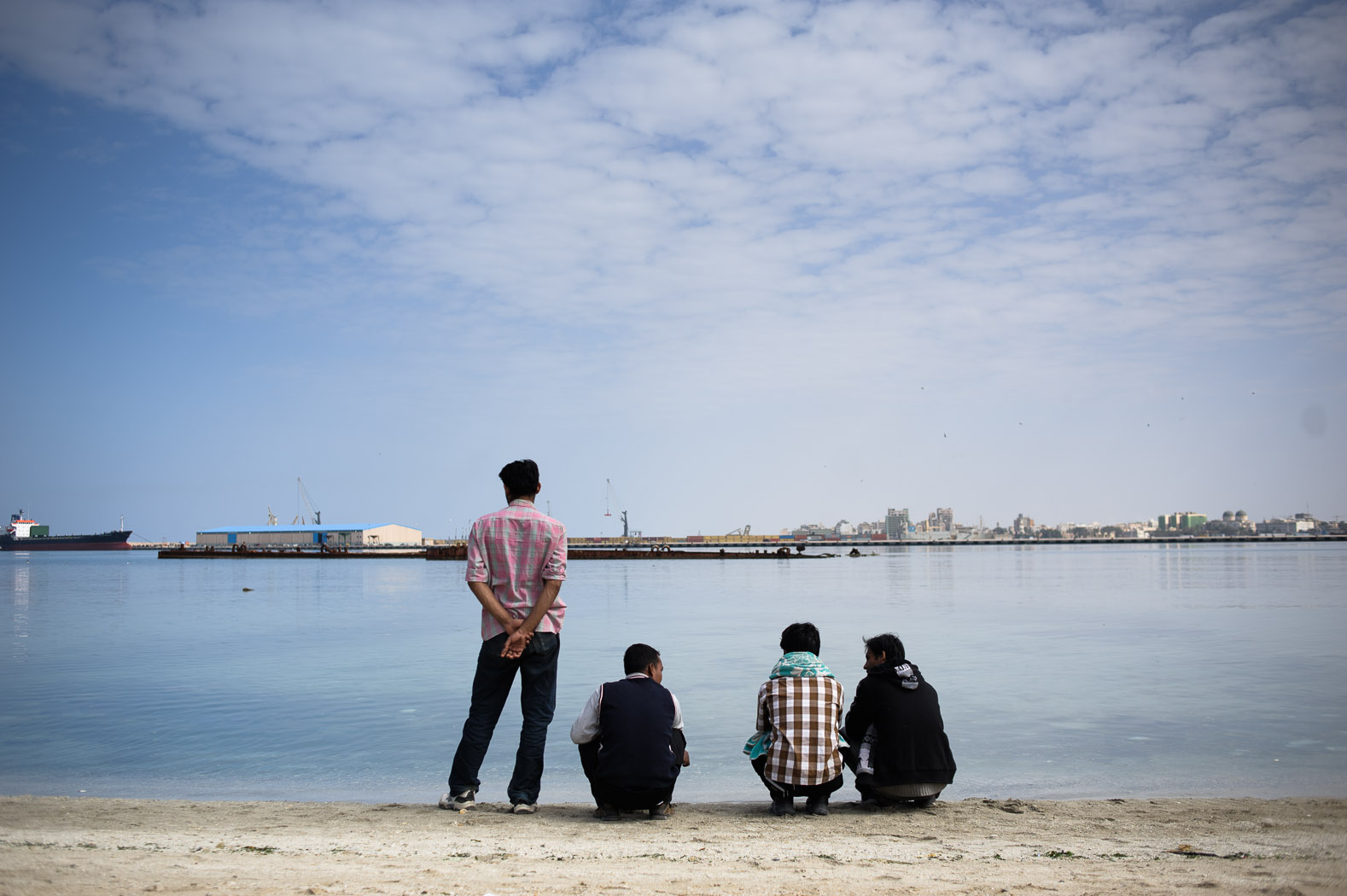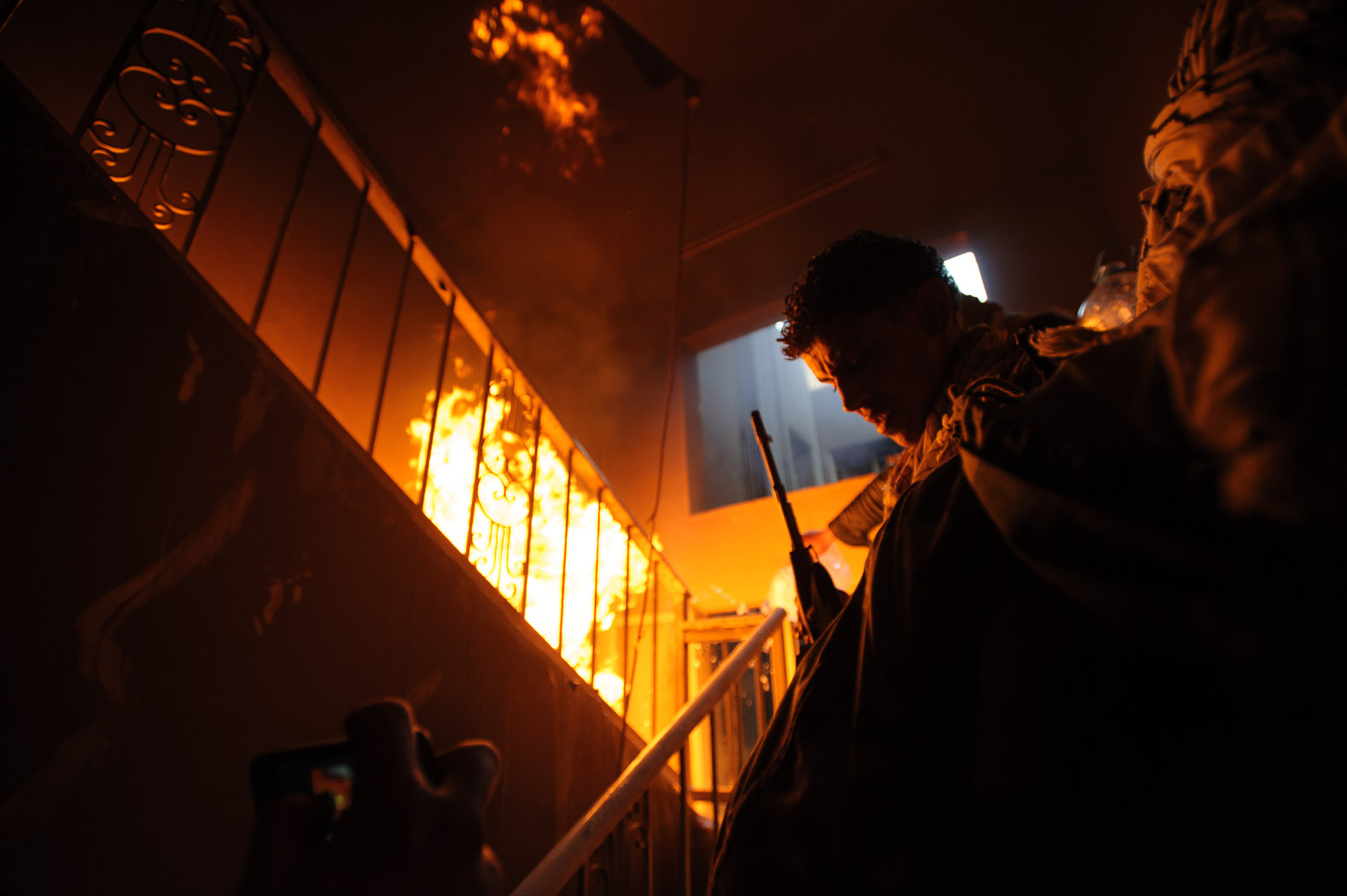
As rebels took arms and fought Gaddafi's loyalist troops, the regime bombed revolutionaries in the desert towns stretching from Ras Lanuf to Ajdabiya.

During the fighting in the desert, Benghazi became the bastion for revolutionary sentiment. During a demonstration in the second city, a youth stands atop the courthouse, as hundreds of people gather below to commemorate the martyrs of the revolution, singing "we will be here until the pain will be removed".

Thousands of migrants were trapped in the country. Hundreds of Bangladeshi workers found themselves caught at Benghazi's port; having been left by their employers, they found themselves without their passports, and with very little money, not having been paid for several months.

For those that could flee the violence, Libyans and ex-patriates alike, they fled across the border into Egypt, bus-loads arriving every day.

Many of Benghazi's inhabitants remained in the city, and sites such as the former army barracks became attractions to visit.

To the south, the front-line between rebels and loyalist troops shifted back-and-forth through the desert, with much of the early fighting between Ajdabiya and Ras Lanuf. Much of the rebel weaponry came from stockpiles left by retreating loyalist troops.

As the "liberated east" became more stable, anti-regime graffiti and posters sprang-up everywhere.

On the front-lines, rebels—many who had never fought before—were watching the skies for regime jets.

Bombings were frequent, and at this stage, and prior to the NATO-imposed no-fly zone, rebels had little protection against the jets.

Separated by a stretch of some 10-20km, much of the fighting involved exchanges of surface-to-surface rockets and shells along the coastal road.

In Misrata, a town that became besieged by loyalist troops after anti-regime fighting broke out, shells rained down daily, destroying civilian homes.

Improvisation was commonplace, with looted 4x4s converted into technicals, mounted with machine guns.

Helicopter gun pods appeared, although their use was criticised by international groups due to their inaccurate and indiscriminate fire.

Misrata became the scene of heavy street-to-street firing, with many inexperienced rebels becoming snipers.

Casualty rates were high in Misrata. Many of the hospitals were abandoned due to shelling, and those that remained were desperately short of equipment, electricity, supplies and trained doctors.

Men speed away from heavy shelling through a residential district on the edge of Misrata in a converted truck, loaded with weapons.

Pressures were rising as the conflict escalated, with bodies flowing out of the Hikma clinic on April 17, 2011, on an hourly basis.

Despite desperate emotions, doctors in a clinic in the rebel zone treated the few loyalist soldiers that were admitted.

Western nations, as well as Qatar and other Muslim countries, provided military aid to the rebels.

Due to a lack of assistance from their own countries, many migrant workers found themselves stranded at the border between Egypt and Libya. For these Chadian men, Egypt refused to let them enter the country, and Chad offered no help in repatriate them.

Many demonstrated in support of western intervention in the streets of Benghazi, whilst mourning the loss of so many who had died fighting the regime.

Tripoli street became the epicentre of Misrata's fighting. A staircase burns after being hit by a rocket-propelled grenade as rebels try to flush out loyalist troops.

An unidentified rebel lays in Ajdabiya hospital.
Normally, in following Islamic and local customs, the dead would be buried before sunset. But this man, killed in the early days of the revolution, was unidentified, and so stored in Ajdabiya's morgue, awaiting relatives to identify the body.

Rebels man a checkpoint at dusk in Misrata, mid-April 2011. It would take them over five months to finish their revolution, ousting Col. Ghaddafi from Tripoli and eventually killing him in his birth-town of Sirte.
























